Bosch washing machine power
 When choosing a new washing equipment, buyers mainly pay attention to its cost, capacity and functionality. Power consumption is rarely assessed, although it is “responsible” for energy consumption, helping to save money or, on the contrary, forcing you to overpay.
When choosing a new washing equipment, buyers mainly pay attention to its cost, capacity and functionality. Power consumption is rarely assessed, although it is “responsible” for energy consumption, helping to save money or, on the contrary, forcing you to overpay.
In order not to make a mistake when buying a Bosch washing machine, it is better to look at this parameter. We suggest you figure out how and why to analyze the power consumption of a Bosch washing machine. We will provide all the calculations, recommendations and an overview of the most economical machines.
Features of power determination
Calculating the power consumed by the machine is a mandatory and strictly regulated procedure. Before putting this parameter on the label, the manufacturer conducts testing. The maximum permitted weight of cotton laundry is placed in the drum of the washing machine, and then a cycle is started with water heating to 60 degrees. The electricity “eaten” by the equipment is measured and divided into total capacity and time. As a result, you will find out how many kW is spent per hour on 1 kg of things.
The power consumed by the washing machine varies depending on the washing conditions.
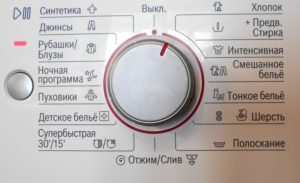 The displayed value is not unchanged - it remains so only when washing cotton at 60 degrees at maximum load. In practice, conditions often differ from factory conditions: less laundry is loaded, a different program is selected, or a different type of fabric is washed. All this affects final energy consumption. So, the number of kilowatts “eaten” by equipment depends on:
The displayed value is not unchanged - it remains so only when washing cotton at 60 degrees at maximum load. In practice, conditions often differ from factory conditions: less laundry is loaded, a different program is selected, or a different type of fabric is washed. All this affects final energy consumption. So, the number of kilowatts “eaten” by equipment depends on:
- the principle of operation of the unit (semi-automatic washing machines consume less, and full-fledged machines consume more);
- type of laundry fabric (wet synthetics, wool, silk differ from cotton in weight, so the energy spent on washing them will vary);
- the selected program (as a rule, everything depends on the specified duration and water heating: low-temperature and fast modes are considered more economical than cycles of 90 degrees and 1.5-2 hours);
- drum fullness (the more things are loaded, the more the electricity “winds”).
The variability of power does not make it a useless parameter. Thanks to the indicated value, you can compare different models, choosing the most profitable option. The fact is that the low kW consumption when washing cotton shows that in other modes the machine will work more economically.
All information is in icons
It is easy to find out the power of a Bosch washing machine - this parameter is always indicated on the label and price tag. As a rule, the parameter is designated by a Latin letter, each of which is assigned a given range of “consumed” kilowatts. Sometimes a “+” is added, which indicates increased efficiency of the unit. Currently, washing machines are assigned one of the following energy consumption classes: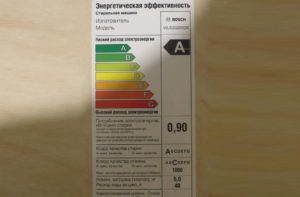
- A+++ - with this class, the machine washes one kilogram of cotton laundry at 0.13 kilowatts per hour;
- A++ – consumed up to 0.15 kW;
- A+ – consumption increases to 0.17 kW;
- A - dangles about 0.19 kilowatts;
- B – in this case, the washing machine spends at least 0.23 kW for washing 1 kg of cotton for an hour;
- C – here consumption reaches 0.27;
- D is the lowest energy consumption class, which consumes up to 0.31 kW for every kilo of things.
The most economical energy consumption class is A+++.
You can estimate energy costs by multiplying this indicator by the capacity of the machine.For example, a 4 kg washing machine with class A++ consumes about 0.6 kilowatts on average per cycle.
We must not forget that these calculations are approximate, since they reflect the consumption of the washing machine under “ideal” conditions - fully loaded with cotton and heated to 60 degrees. When washing synthetics and raising the temperature to 80-90, the machine will spend more, and on short and low-temperature cycles - less. For semi-automatic machines, the decoding of classes is different, since a separate power gradation is provided for them.
Parameters of modern Bosch machines
Energy consumption classes below level “D” are no longer produced, as they are too expensive to operate and have completely lost popularity. Nowadays you rarely even see machines with “C” and “B”, especially among Bosch - even the most budget Bosch washing machines have an “A” or “A+” sticker. Let’s look at how profitable such models are in a mini-review.
- Bosch WAN 28290 is a free-standing “front-facing” with a loading capacity of 8 kg, direct drive, display and electronic control. Despite its high performance characteristics - spin speed up to 1400 rpm, 15 programs, full protection against leaks - the washing machine consumes only 0.13 kW per kg of laundry. The fact is that the machine has been assigned the most economical energy consumption class “A+++”. The water consumption will be 55 liters per cycle. The model will also please you with its functionality: child lock, delay start timer, sound, automatic control of imbalance and foam formation. The cost of the washing machine varies between 45-46 thousand rubles.
- Bosch Serie 4 WLL2416M. Another free-standing front model with economical energy consumption. Here the energy consumption class is “A++”, and about 41 liters of water are consumed per cycle.Washing and spinning efficiency is rated “A” and “B” respectively, which is considered quite good. As for safety, there is partial protection against leaks, blocking the panel from accidental pressing and automatic control of imbalance and foam level. There are 15 basic programs, including the rarely seen “Direct Injection”, “Night”, “Mixed” and “Preliminary”. The noise level ranges from 51-75 dB, there is a start delay of up to 24 hours and unique Bosch technologies EcoSilence Drive and VarioSoft. Price – about 29 thousand rubles.

- Bosch WLL 24241. Another washing machine with the most economical energy consumption class - A+++. Interestingly, the equipment is designed for simultaneous washing of up to 7 kg of laundry, there is a digital display, 17 different programs and a spin speed of 1200 rpm. One of the reasons for the slow accrual of kilowatts is the low water consumption of 42 liters per cycle. Helps optimize the operation of the machine and the brand’s unique technologies: EcoSilence Drive, VarioSoft and VarioPerfect. The washing machine does not lack additional options, delayed start, full protection of the housing from leaks, a digital display and touch control. The machine costs approximately 29 thousand rubles.
- Bosch WLG 20261 OE. Narrow front camera with consumption class “A”. It represents a budget option: the cost is about 24 thousand rubles. with a load of up to 5 kg, a display, a spin speed of up to 1000 rpm and a water consumption of 40 liters per cycle. There is also partial protection against leaks, more than 10 programs, delayed start for 24 hours, a compartment for liquid powder and washing sound.
Almost all modern Bosch have an energy consumption class from “A” to “A+++”.
Modern machines from Bosch offer both reduced energy consumption and advanced functionality.We must not forget about the build quality - the “Germans” have proven themselves excellent, delighting with high quality and long service life. The main thing is to take the choice of model seriously, comparing all technical indicators.
Is it wise to obsess over energy consumption?
When choosing a washing technique, it is irrational to pay attention to only one parameter. Ideally, the machine should meet all the characteristics: have convenient capacity, be economical, have advanced functionality and be inexpensive. But “golden” models are not so common.
However, a balance needs to be struck. Minimum consumption is good, but engine power also matters: if the washer doesn’t rinse well, you won’t be able to save money. Water consumption and watts are interconnected - a drum with a small amount of liquid is easier to heat and rotate, which will affect the final kW. There will be no benefit from super profitable machines that have to be started several times for better rinsing.
Interesting:
Reader comments
- Share your opinion - leave a comment

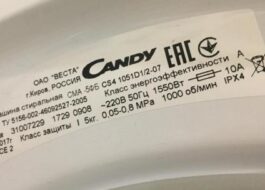
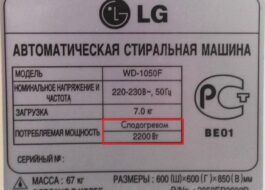

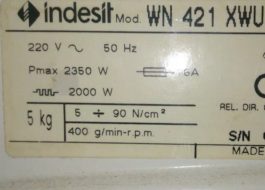
















Add a comment